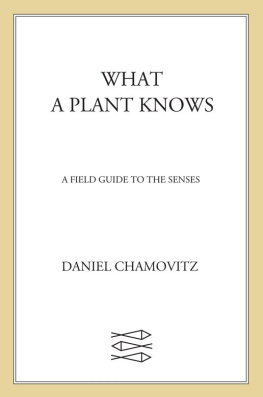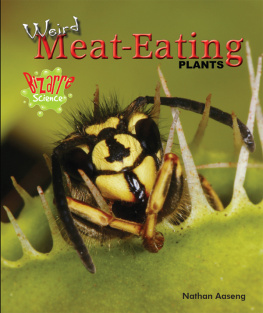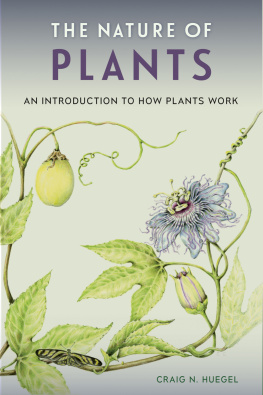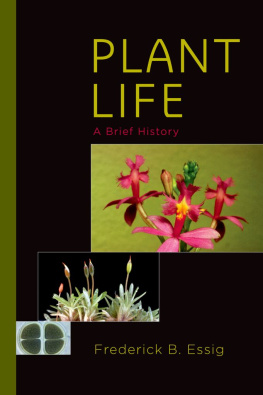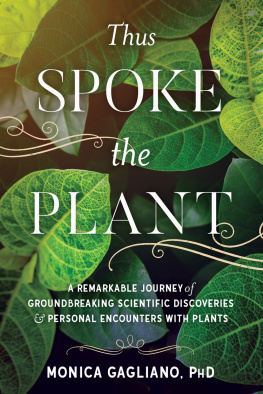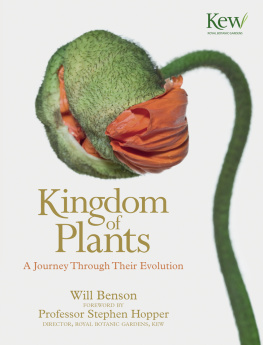What a Plant Knows would never have been published without the input of three amazing women.
First, my wife, Shira, who encouraged me to push the envelope, do something beyond academic research and writing, and, finally, to press send. Without her love and belief, this book would never have happened.
Second, my agent, Laurie Abkemeier. Her experience, tenacity, support, and boundless optimism made a naive author feel like a Pulitzer Prizewinning veteran. I was fortunate in finding not only an agent but a friend.
Third, my editor at Scientific American / Farrar, Straus and Giroux, Amanda Moon, who had the daunting task of turning my academic wording into readable prose. Amanda worked tirelessly to edit and reedit each chapter, and then do it again a third, a fourth, and a fifth time, all with utmost patience.
Many scientists from around the world helped me craft this into a scientifically valid work. Professors Ian Baldwin (Max Planck Institute for Chemical Ecology), Janet Braam (Rice University), John Kiss (Miami University), Viktor Zarsky (Academy of Sciences of the Czech Republic), and Eric Brenner (New York University) were kind enough to take time from their busy schedules to read parts of this book and to make sure that the science was fairly presented. The idea for this book originated in discussions with Eric, and I will be forever thankful for his insight, encouragement, and friendship. I also thank Professor Jonathan Gressel (Weizmann Institute of Science), Dr. Lilach Hadany (Tel Aviv University), Professor Anders Johnsson (Norwegian University of Science and Technology), Professor Igor Kovalchuk (University of Lethbridge), and Dr. Virginia Shepherd (the University of New South Wales) for input at various stages of this project. The influence of my mentors, Professor Joseph Hirschberg and Professor Xing-Wang Deng, is felt in all the science I do and write.
I thank Karen Maine for her edits and diligence in keeping me on time, Ingrid Sterner for an amazing copyedit, and the team at Scientific American / Farrar, Straus and Giroux, who were wonderful to work with.
I am lucky to have fabulous colleagues at Tel Aviv University who provided many helpful hallway discussions and ideas. In particular, many of the ideas in this book were explored first with Professors Nir Ohad and Shaul Yalovsky in our course Introduction to Plant Sciences. I want to thank my labmates, Ofra, Ruti, Sophie, Elah, Mor, and Giri, for accepting my absences in overseeing their research while I wrote this book and especially Dr. Tally Yahalom, who covered for me in running the lab. My daily interaction with them is a constant reminder of why research is so exciting. Im also indebted to the benefactor of the Manna Center for Plant Biosciences who has helped show me how modesty coupled with focus can synergize to reach important goals.
I wish to thank Alan Chapelski for the portrait, and Deborah Luskin, who helped me start to write. My immediate and extended families have been a source of unending support. From my sister, Raina, to Ehud, Gitama, Yanai, Phyllis, and my mother, Marcia, who were the first readers of the manuscript, I am forever thankful. My children, Eytan, Noam, and Shani, are constant sources of joy and were even available to provide me with a missing word. And lastly, my father, David, who offered me edits and constant support, and lived vicariously through the books publication.
Daniel Chamovitz, Ph.D., is the director of the Manna Center for Plant Biosciences at Tel Aviv University. He grew up in Aliquippa, Pennsylvania, and studied at Columbia University before receiving his Ph.D. in genetics from the Hebrew University of Jerusalem. He has been a visiting scientist at Yale University and at the Fred Hutchinson Cancer Research Center in Seattle, and has lectured at universities worldwide. His research on plants and fruitflies has appeared in leading scientific journals. Chamovitz lives with his wife and three children in Hod HaSharon, Israel. His website is www.danielchamovitz.com .
Intelligence is a loaded term. Everyone from Alfred Binet, the inventor of the much-debated IQ test, to the renowned psychologist Howard Gardner has had a different understanding of just what it means to classify someone as intelligent. While some researchers consider intelligence a unique propensity of human beings, we have seen reports that animalsfrom orangutans to octopusespossess qualities that fall under some definitions of intelligence. Applying definitions of intelligence to plants, however, is much more contentious, though the question of intelligent plants is hardly a new one. Dr. William Lauder Lindsay, who doubled as a physician and a botanist, wrote in 1876: It appears to me that certain attributes of mind, as it occurs in Man, are common to Plants .
Anthony Trewavas, an esteemed plant physiologist based at the University of Edinburgh in Scotland and one of the early modern purveyors of plant intelligence, points out that while humans are clearly more intelligent than other animals, it is unlikely that intelligence as a biological property originated only in Homo sapiens . In this vein he sees intelligence as a biological characteristic no different from, say, body shape and respirationall of which evolved through the natural selection of characteristics present in earlier organisms. We saw this quite clearly in Chapter Four in the deaf genes shared by plants and humans. These genes were present in a common ancient ancestor of plants and animals, and Trewavas has proposed that rudimentary intelligence was present there as well.
Controversy arose among plant biologists when a group of scientists who study various aspects of plant function defined a new field in 2005 that they called plant neurobiology, which aims to study the information networks present in plants. These scientists saw many similarities between plant anatomy and physiology and the neural networks in animals. Some of these similarities are obvious, such as the electrical signaling we encountered in the Venus flytrap and Mimosa plants, and some more divisive, such as the architecture of plant roots being similar to the architecture of neural networks found in various animals.
This latter hypothesis was originally put forward in the nineteenth century by Charles Darwin and has been picked up again over the past few years, particularly by Stefano Mancuso from the University of Florence and Frantiek Baluka from the University of Bonn, two of the pioneers in the field of plant neurobiology. Many other biologists who study plants, including a number of very prominent scientists, criticized the ideas behind plant neurobiology, claiming that its theoretical basis is flawed and that it has not added to our understanding of plant physiology or plant cell biology. They strongly felt that the plant neurobiologists had gone too far in drawing parallels between plant and animal biology.
Many proponents of plant neurobiology would be the first to explain that the term itself is provocative and therefore useful for encouraging more debate and discussion about the parallels between the ways plants and animals process information. Metaphors, as pointed out by Trewavas and others, help us make connections that we might not normally make. If by using the term plant neurobiology we challenge people to reevaluate their understanding of biology in general, and plant biology specifically, then the term is valid. But we must be clear: no matter what similarities we may find at the genetic level between plants and animals (and, as we have seen, they are significant), they are two very unique evolutionary adaptations for multicellular life, each of which depends on unique kingdom-specific sets of cells, tissues, and organs. For example, vertebrate animals developed a bony skeleton to support weight, while plants developed a woody trunk. Both fill similar functions, yet each is biologically unique.

